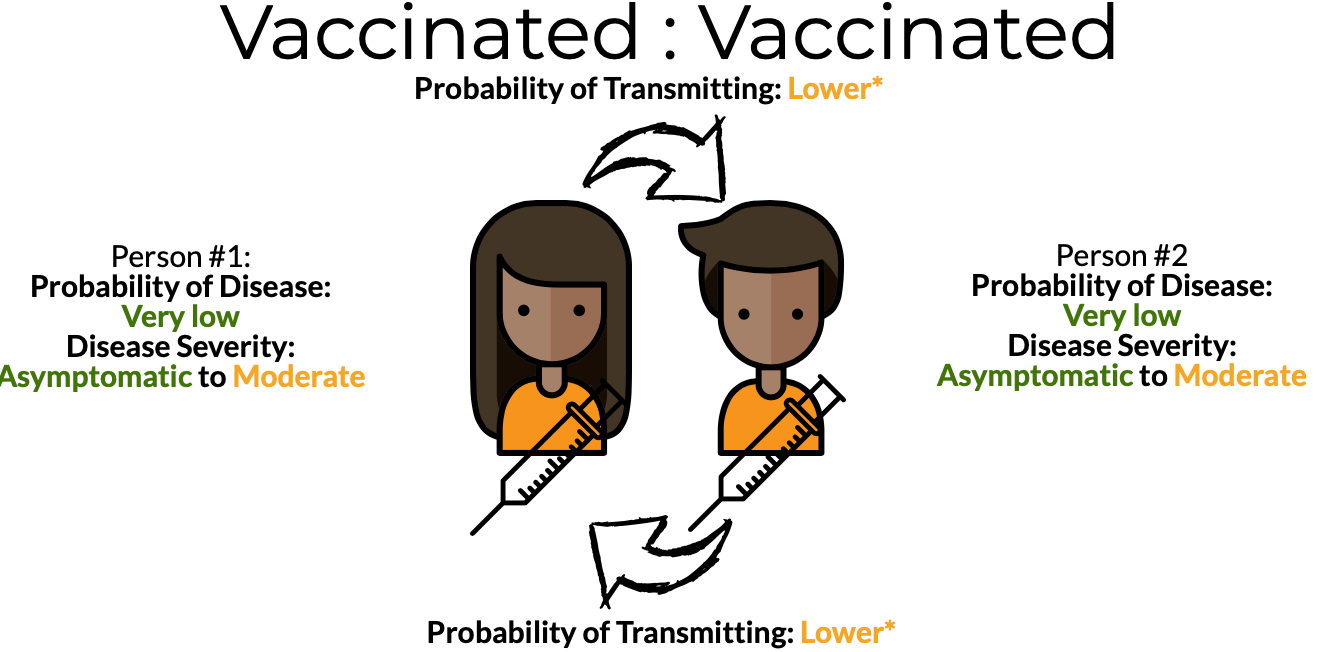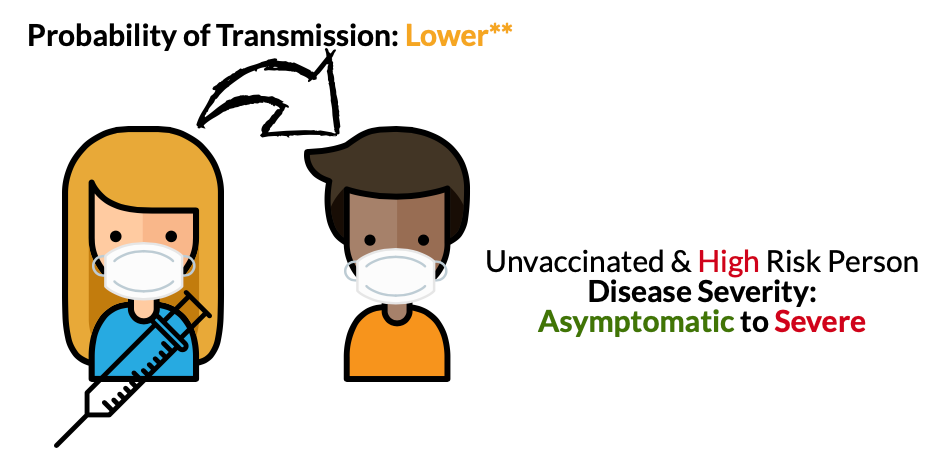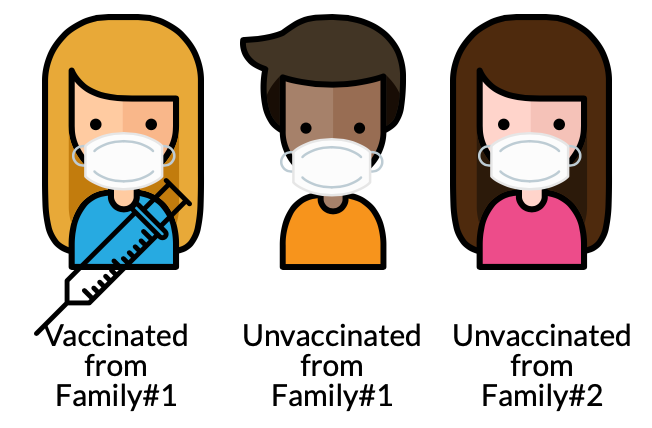As I’m sure you’ve seen by now, CDC published their guidelines for vaccinated people. If you haven’t seen them yet, you can go here or here or here.
Here are my thoughts…
“Indoor visits between fully vaccinated people who do not wear masks or physically distance from one another are likely low risk.”
Not surprising. We know vaccines protect the vaccinated. Time to keep moving.
“Unvaccinated people (…) can visit with fully vaccinated people indoors, without anyone wearing masks, with a low risk of SARS-CoV-2 transmission. For example, fully vaccinated grandparents can visit indoors with their unvaccinated healthy daughter”.
So, if you’re vaccinated you can be unmasked around an unvaccinated, low-risk family member. I’m surprised (and happy) about this recommendation. I’m surprised because the CDC doesn’t like risk. They are incredibly careful (sometimes too careful). Even if someone is low risk, that doesn’t necessarily mean there is NO risk; they can still end up in the hospital from COVID19. So, to me, this is an indication of two things:
A) CDC is confident that vaccinated transmission is really low. We do have preliminary evidence, but nothing concrete yet. Maybe they have some secret insider information; and/or,
B) The CDC is confident with the science and their list of high risk diseases.
Nonetheless, this is great news. Go hug your healthy grandkids!
“If any of the unvaccinated people or their household members are at increased risk of severe COVID-19, all attendees should take precautions”
You need to be careful if you’re vaccinated and visiting an unvaccinated older adult, pregnant friend, or someone with medical conditions (listed HERE). Period. We have 523,850 deaths in the United States that can “prove” COVID19 is not friendly to some. This particular guidance will also help keep hospitals above water.
“If unvaccinated people come from multiple households, there is a higher risk of SARS-CoV-2 transmission among them. Therefore, all people involved should take precautions”
This highlights two things. First, individual risk between two unvaccinated people from two households is high. This is not surprising. Epidemiologists have been shouting this from rooftops for a year now.
Second, this hints at population risk. The vaccinated person can still transmit the virus (even if it’s at a lower rate) to all unvaccinated in a room. The vaccinated person can still do serious damage to multiple households at a time. So, in this case, everyone needs to still be careful when we start mixing households.
“All people, regardless of vaccination status, should avoid medium- or large-sized in-person gatherings and to follow any applicable local guidance restricting the size of gatherings.”
Again, this highlights individual risk (among unvaccinated) and population risk (among vaccinated). Fine. No concerts yet. I have tickets from a postponed 2020 concert that’s rescheduled for November 2021. I’m hopeful this will still happen.
“At this time, CDC is not updating our travel recommendations and requirements.” Which is: “Delay travel and stay home to protect yourself and others from COVID-19.”
This was surprising to me and made me grumpy. But after sleeping on it, I think I understand why CDC decided this. If you’re vaccinated, there is very little individual risk while traveling. The problem comes when we start talking about populations moving. The more people travel (especially from a high risk area to a low risk area), the more you threaten low risk areas. Vaccinated people put populations at risk when they travel. This also tells me that the CDC is still very much worried about variant spread.
Bottom line:
CDC took a safe and cautious route, as per usual. This guidance did not to take any risks (except for one small one).
Can grandparents hug healthy grandkids? YES. YES. YES.
There’s an undertone that vaccines significantly reduce transmission
We still do have quite a few questions that need to be answered. For example, do vaccines reduce chances or severity of long COVID19? It will be months (if not years) before we have a clear understanding of this. Proceed with caution.
Love, YLE
P.S. CDC’s guidance doesn’t change anything about my infographs; the implications of those scenarios are still accurate.









Isn't the wild card in all this the Brazilian variant P1?
Can you talk a bit more about child to child (under 6) transmission? If all adults are vaccinated but the 4 kids (2 families) aren’t what is the chance of kid transmitting it to the other kids? Thanks so much.